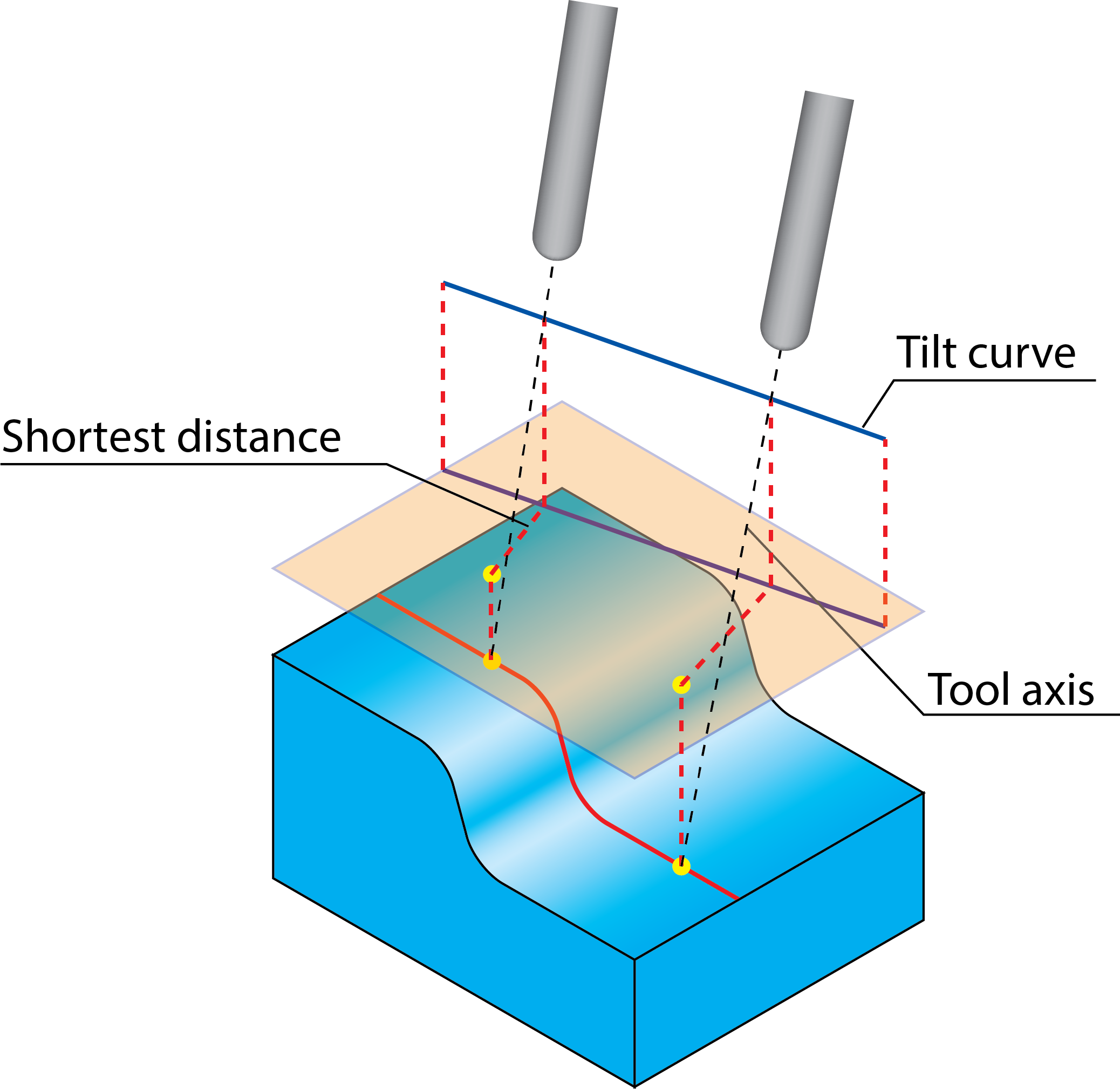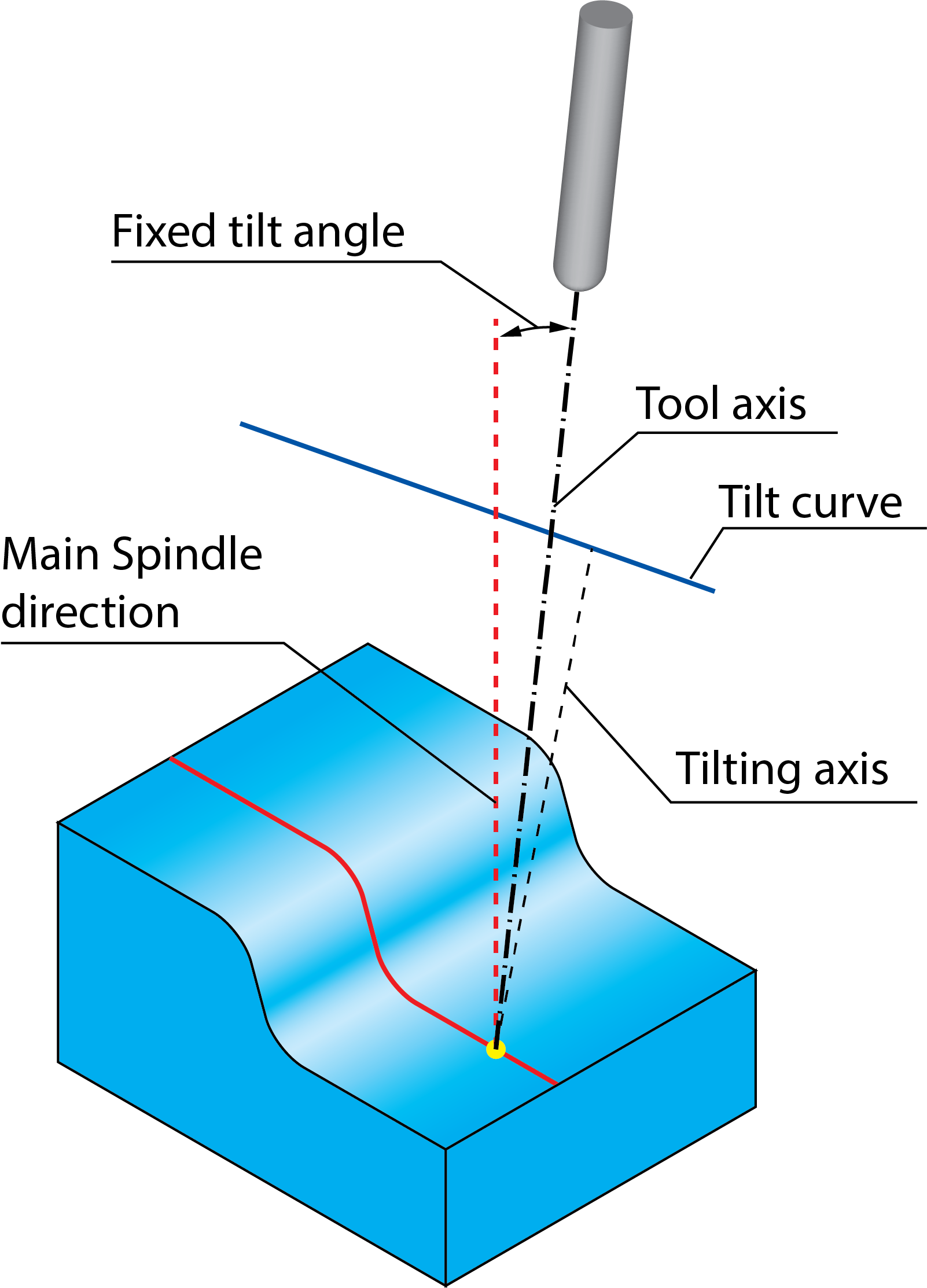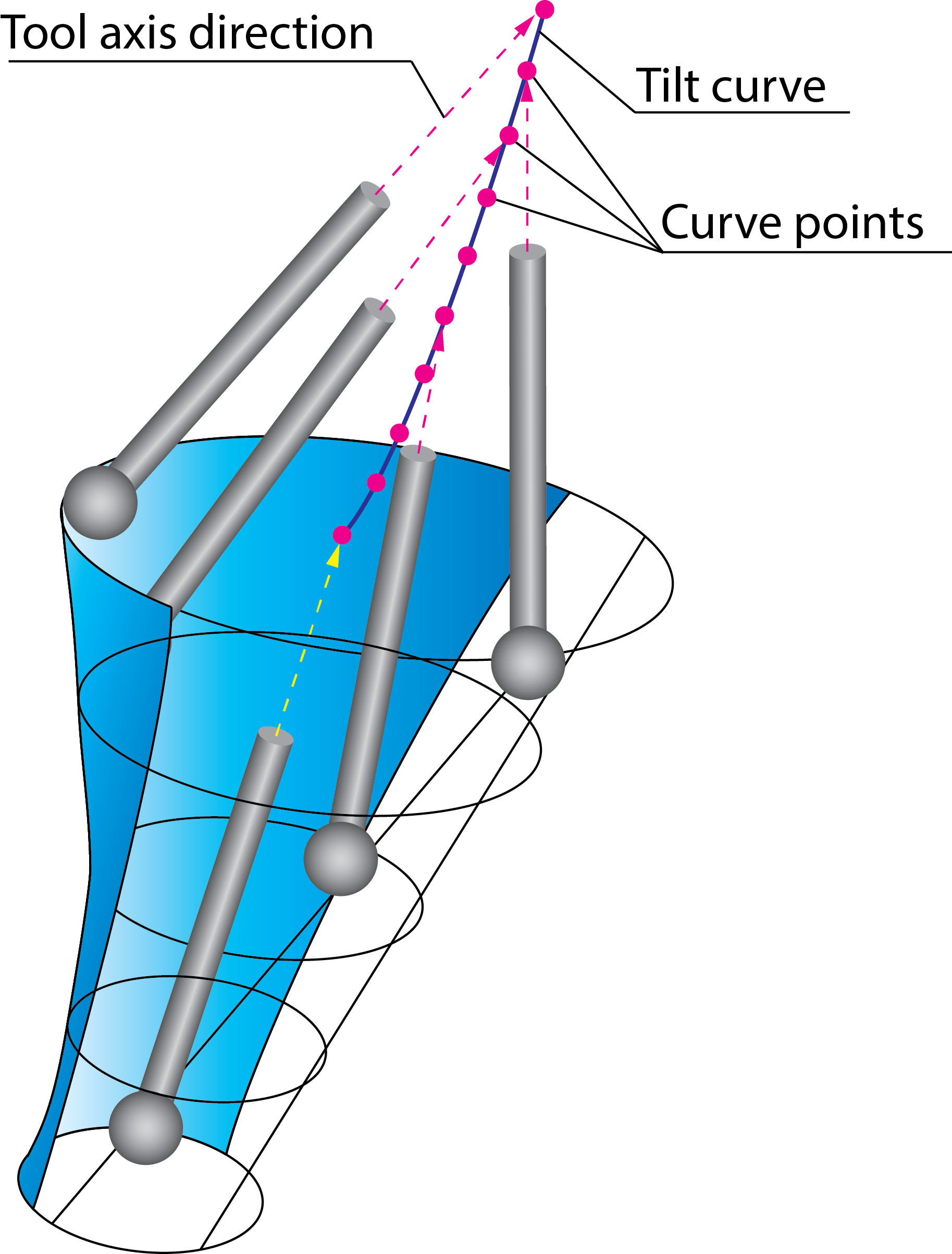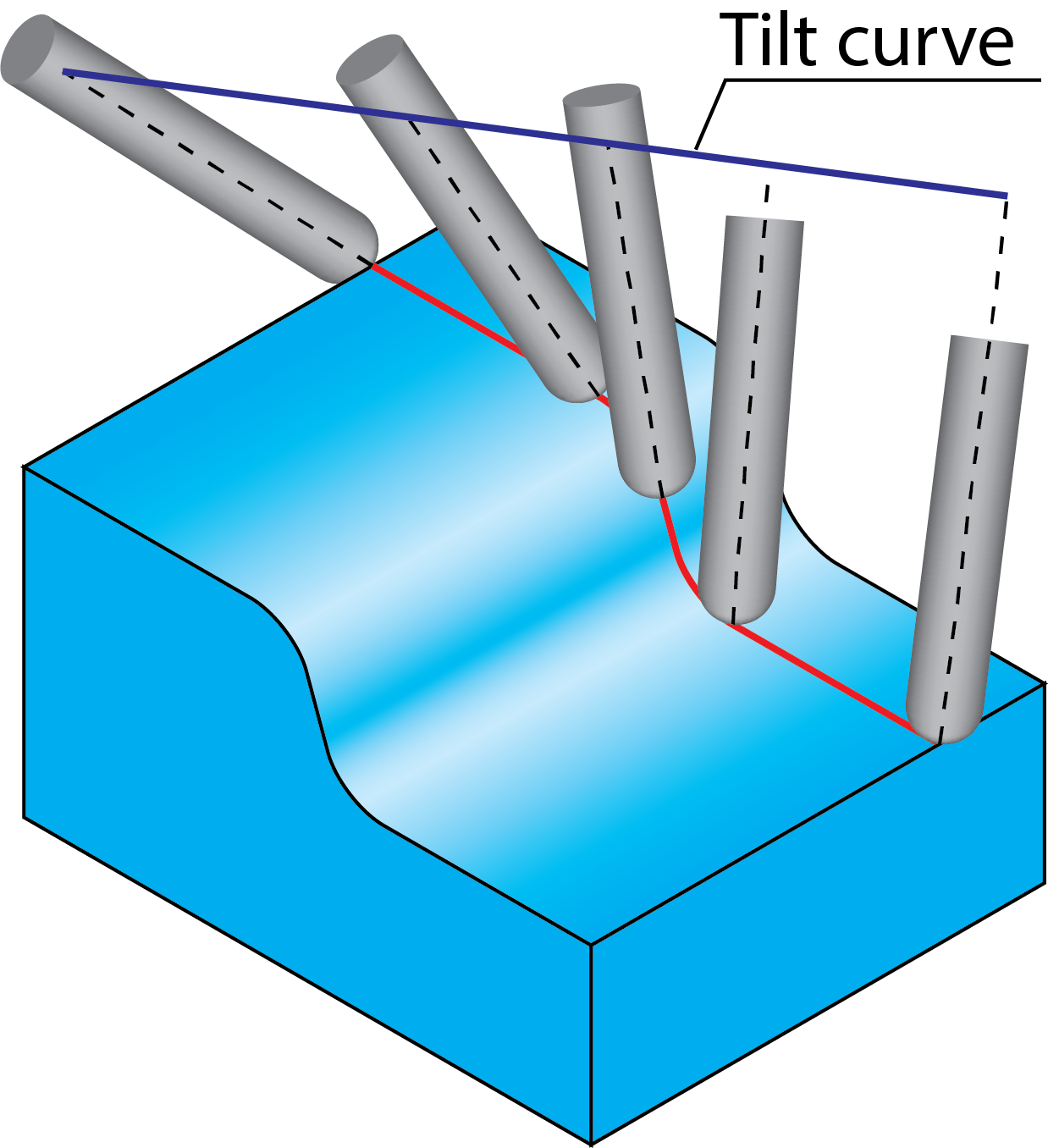Tilted through curve
With this option, the tool axis intersects with the specified Tilt curve. You can define the tilt curve parameters from the Tilt curve tab. |
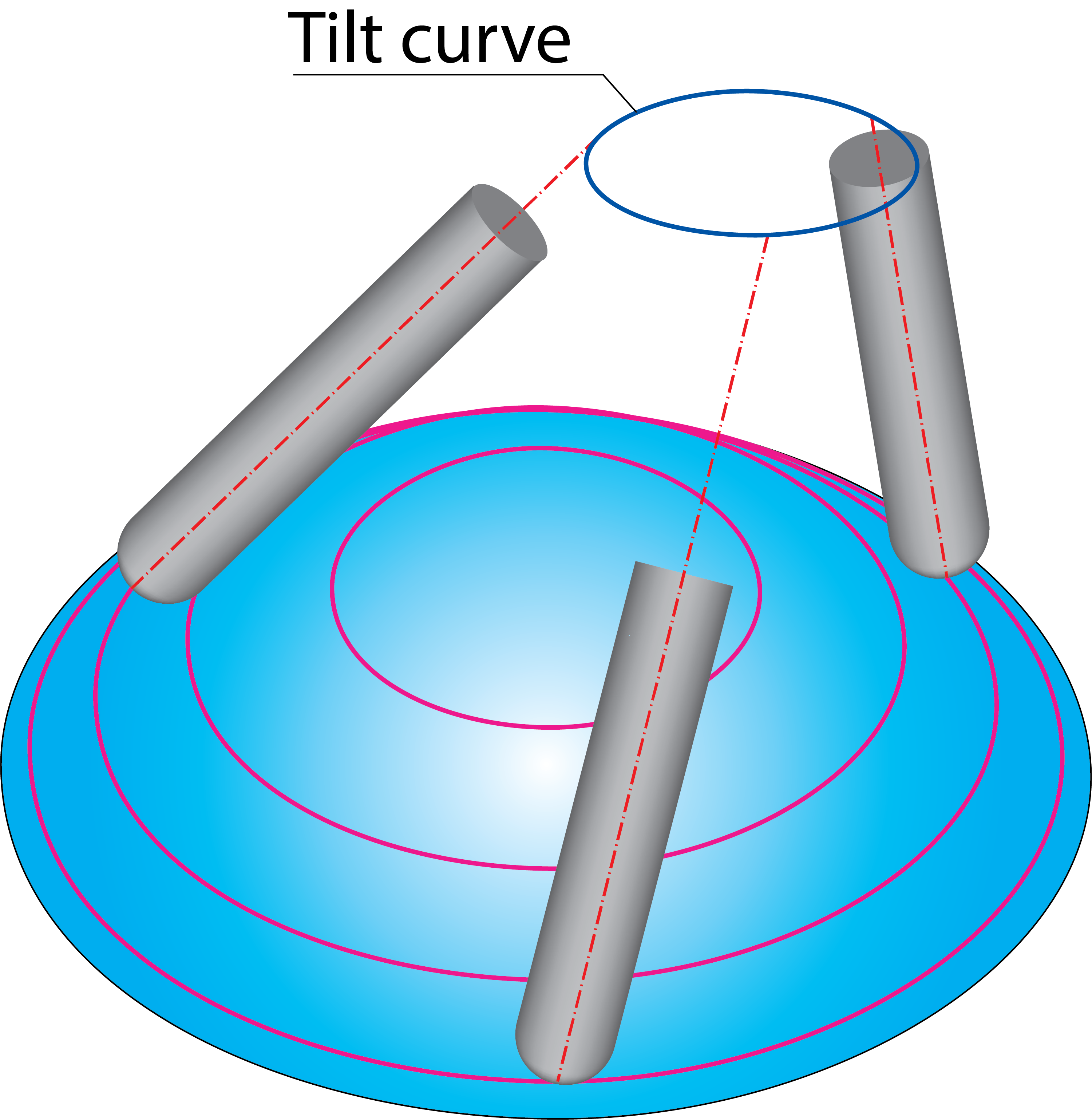 |
Curve tilt type
The Curve tilt type options enable you to define how the end point of the tool axis vector is found on the Tilt curve. In other words, these options define how the tool axis is aligned relative to the Tilt curve.
Closest pointThe tool axis is defined by the direction vector that connects the contact point and the Tilt curve by the shortest distance. With this method, SolidCAM expands a virtual sphere from the contact point. The first intersection point between the sphere and the Tilt curve defines the shortest distance. |
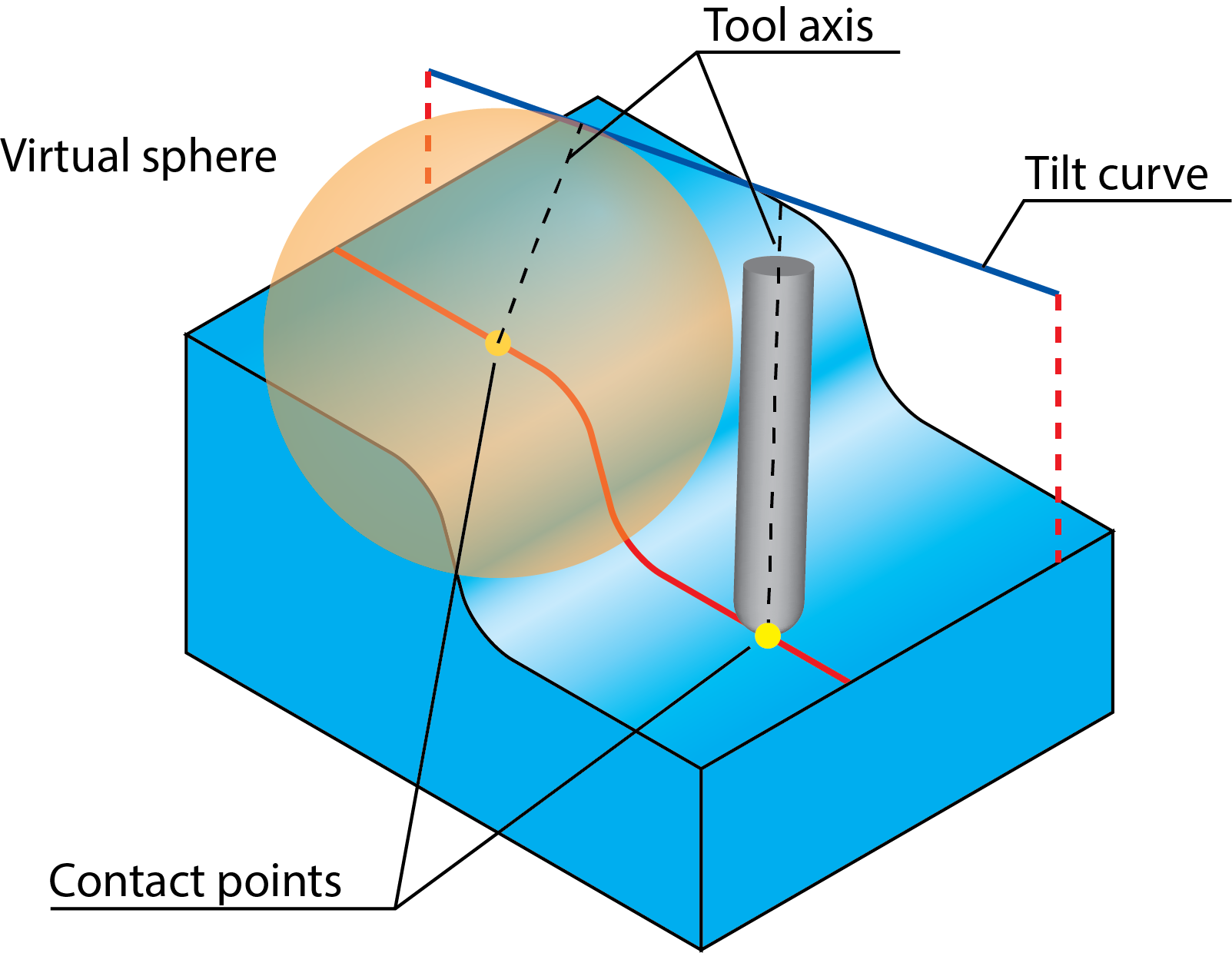 |
||
Angle from curveThe direction of the tool axis is determined using the projections of contact points and the Tilt curve on a plane orthogonal to the main spindle direction. On the illustration, the tool contacts points and the Tilt curve are projected onto a plane parallel to XY-plane (the main spindle direction is the Z-axis) |
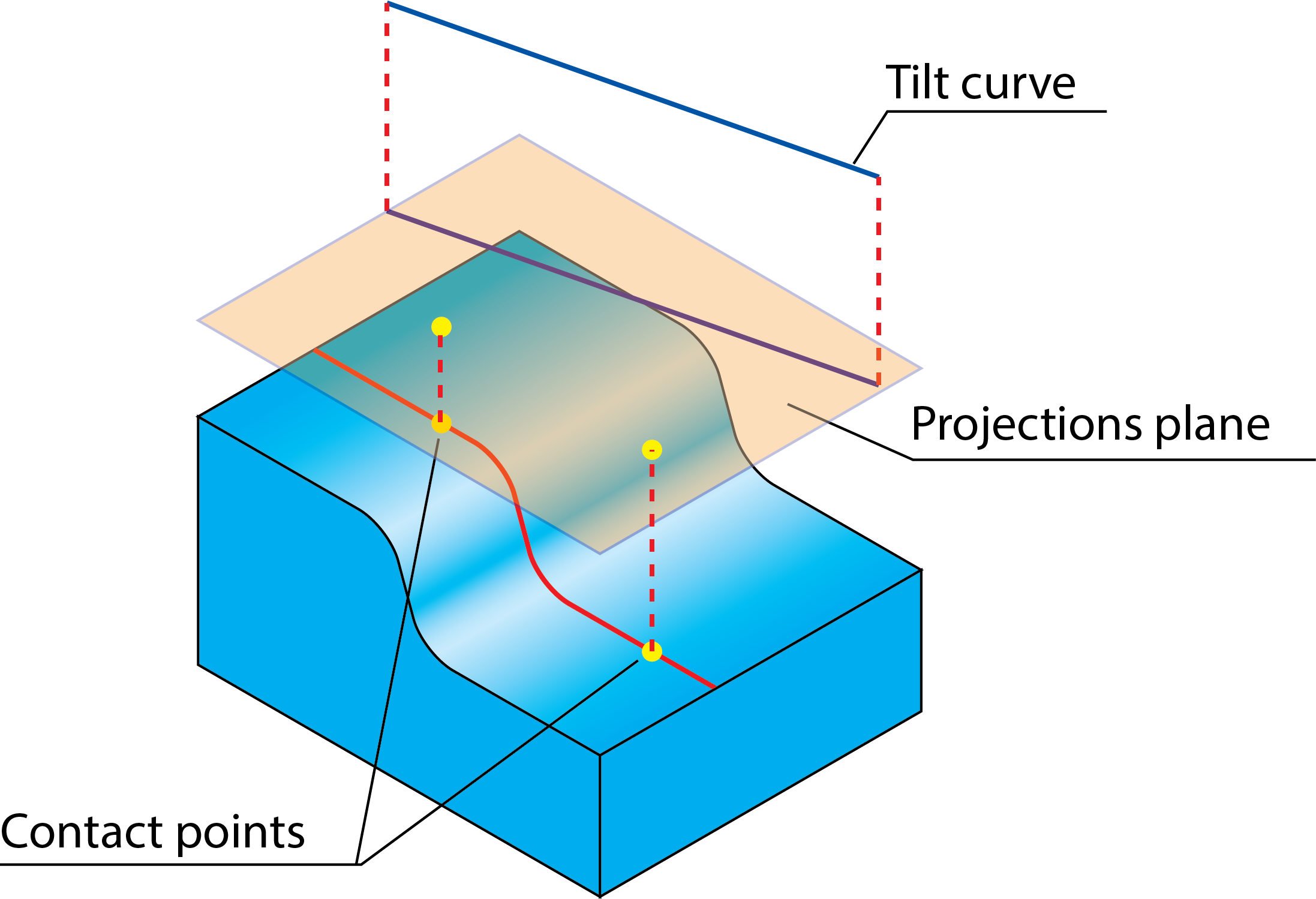 |
||
The projected contact points and the projection of the Tilt curve are connected by the shortest distance. The connecting points found on the projection are projected back onto the Tilt curve determining the direction of the tool axis. |
|
||
Angle from spindle, main directionThe tilting is performed from the main spindle axis at the specified Fixed tilt angle value towards the tilting axis. The orientation of the tilting axis is determined using the projections of contact points and the Tilt curve on a plane orthogonal to the main spindle direction (see the Angle from curve option). On the illustration, the tool contact points and the Tilt curve are projected onto a plane parallel to XY-plane (the main spindle direction is the Z-axis). |
|
||
The projected contact points and the projection of the Tilt curve are connected by the shortest distance. The connecting points found on the projection are projected back onto the Tilt curve determining the direction of the tilting axis. |
|
||
The tool tilting is performed from the main spindle direction towards the defined tilting axis at the specified Fixed tilt angle value. |
|
||
From start to endThe Tilt curve is divided by a number of points equal to the number of cutting passes. The tool axis for each cutting pass is directed to the corresponding point on the Tilt curve.
|
|
||
From start to end for each contourThe Tilt curve is divided by a number of points equal to the number of tool path positions of the specific cutting pass. In certain tool path positions, the tool is tilted to the corresponding point on the Tilt curve. The tool tilting changes gradually from the start point of the Tilt curve to its end point. At the start point of a cutting pass, the tool axis is tilted to the start point of the Tilt curve. In the midpoint of the cutting pass, the tool axis is tilted to the midpoint of the Tilt curve. Accordingly, at the end of the cutting pass, the tool axis is tilted to the end point of the Tilt curve. |
|
||
Automatic curveThis is the only strategy where the curve is calculated automatically by the system for each contour and you do not have to input any tilting curve geometry. The automatically generated curve tries to dampen the tool motion by a user-defined dampening Distance or relative to the % from tool radius that you can set in the Damping section.
|
|||
Advanced
Using this option, SolidCAM enables you to control the side tilting direction at the intersection of two surfaces with different isometric directions. The Side tilt fanning distance parameter defines the distances from the surface intersection where the transition of side tilting direction is started.
|
This option is not available when the Curve Tilt type is selected as From start to end and From start to end for each contour. |
Angles
SolidCAM enables you to define an additional tilting from the calculated vector through the specified tilt curve towards the chosen tilt axis.
Fixed tilt angleThis parameter defines the angle of the additional tool tilting from the vector through the defined curve towards the tilt axis.
Tilted toThis option enables you to define the direction of the tilt axis. SolidCAM enables you to choose one of the Coordinate System axes (X, Y or Z) or define the tilt axis by a line. When the Line option is chosen, click the Data button to pick the start and end points of the tilt axis line directly on the solid model.
|
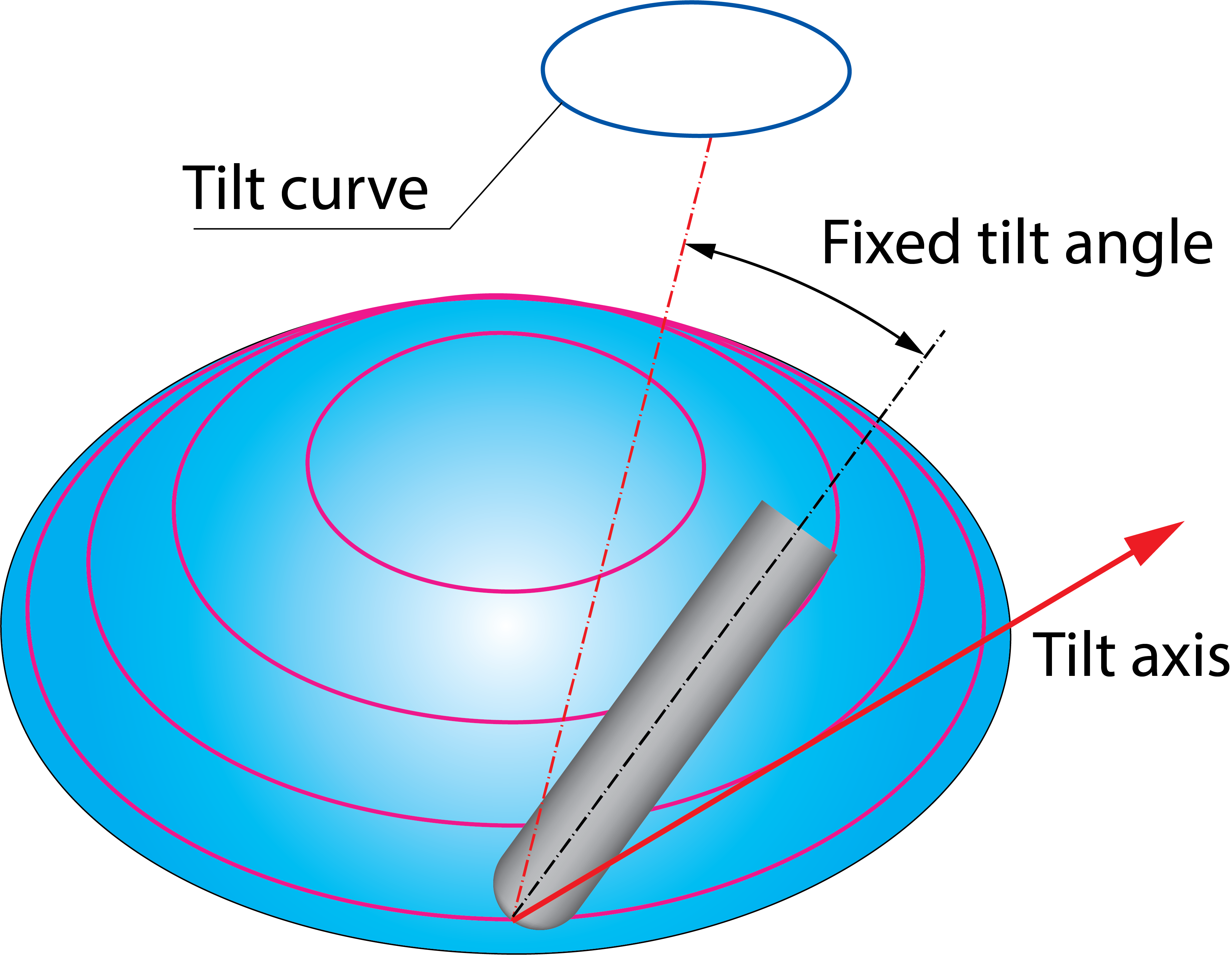 |
Tilt Curve
The Tilt curve section enables
you to choose an existing profile geometry for tilt curve or define a
new one with ![]() displaying the
Geometry Edit dialog box. This option
is not available when the Curve tilt type is selected as Automatic
curve.
displaying the
Geometry Edit dialog box. This option
is not available when the Curve tilt type is selected as Automatic
curve.
